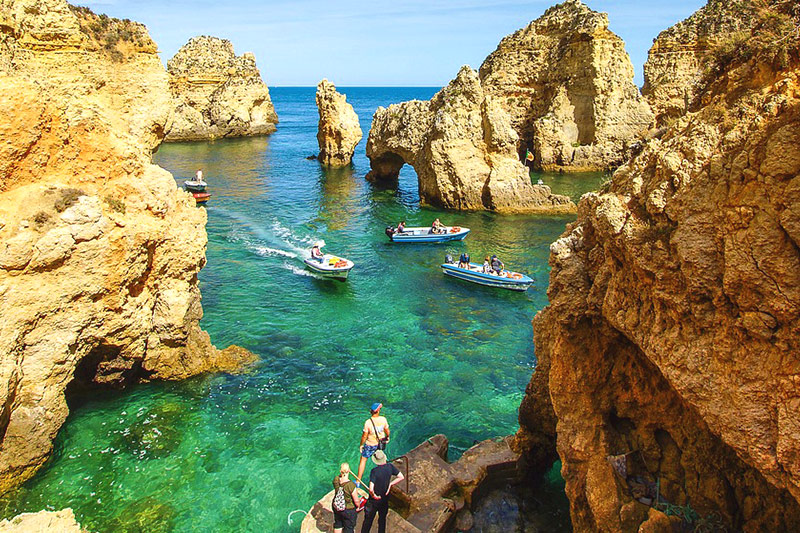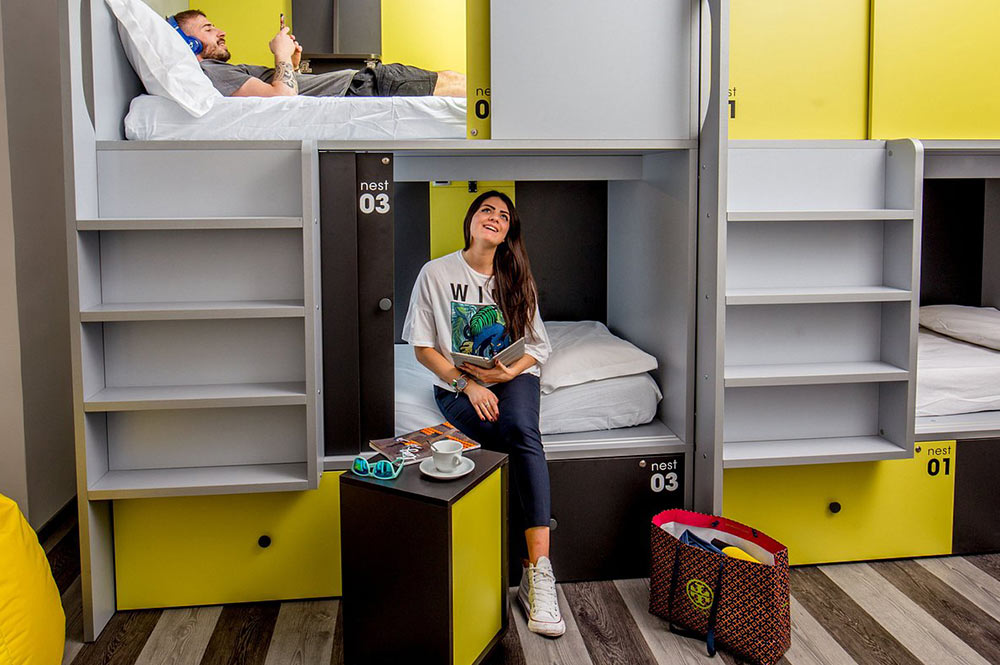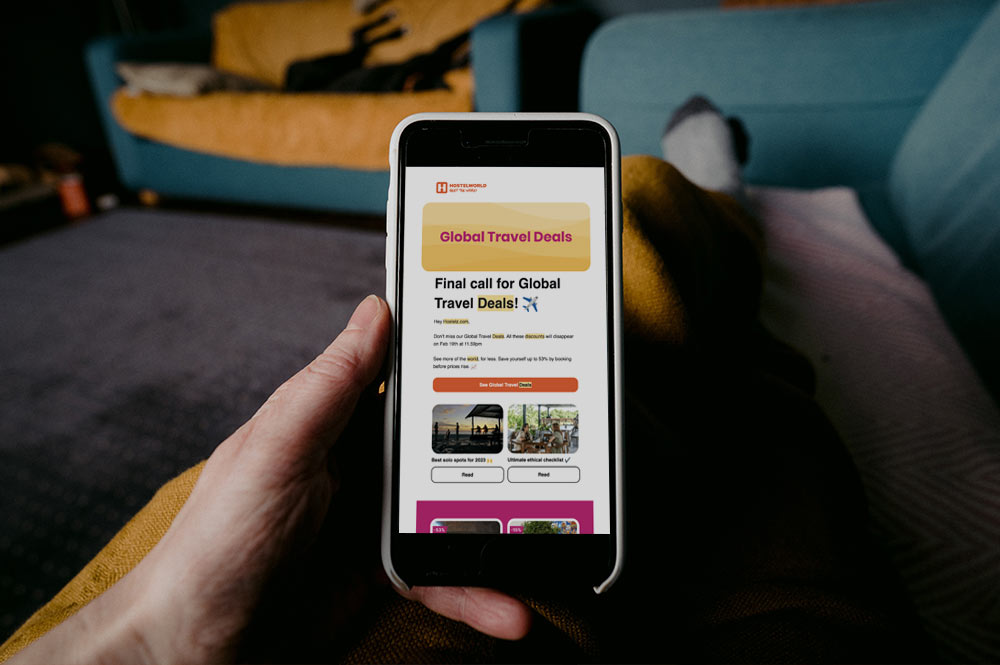Europe’s magic shifts with the seasons. One week, you might be hiking the misty Dolomites; the next, exploring Berlin’s nightlife till dawn. Each season offers something unique—winter’s off-season deals, summer’s beach parties, or autumn’s wine festivals.
This guide breaks down the pros and cons of each season, helping you choose the perfect time for your adventure. Best Time to Backpack Europe? An overview from Spring to Winter.
Backpacking Europe in Spring (March-May)
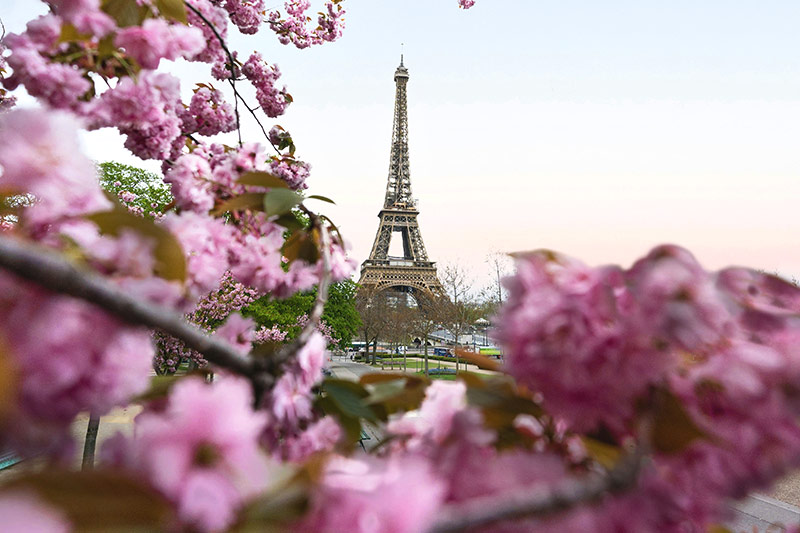
In spring, the air is fresh, the landscapes are split open with color, and you’ll find calmness in places that turn hectic in summer.
Pros:
- Mild Weather, Ideal for Active Days: Spring brings crisp mornings and pleasantly warm afternoons across much of Europe. It’s perfect for hiking trails, cycling along coastlines, or even exploring cities without breaking a sweat.
- Fewer Crowds in Tourist Hotspots: Popular cities like Rome, Paris, and Barcelona are yours to explore with fewer people blocking your views. You’ll find shorter lines and more affordable accommodation options.
- Nature in Full Bloom: From the cherry blossoms in Paris to the wildflowers of Scotland’s Highlands, Europe’s landscapes come alive in spring. Festivals celebrating seasonal blooms, like Keukenhof’s Tulip Festival in the Netherlands, add a unique flavor to the season.
Cons:
- Some Attractions May Have Limited Hours: Not all attractions will be in full swing yet, especially those that cater to summer tourists.
- Unpredictable Rain: Spring showers can pop up unexpectedly. While usually brief, it’s best to keep a rain jacket handy if you’re planning to be outdoors.
Best For:
- Hiking, Cycling, and Nature Enthusiasts
- Travelers Seeking a Quieter, Personal Experience
Backpacking Europe in Summer (June-August)
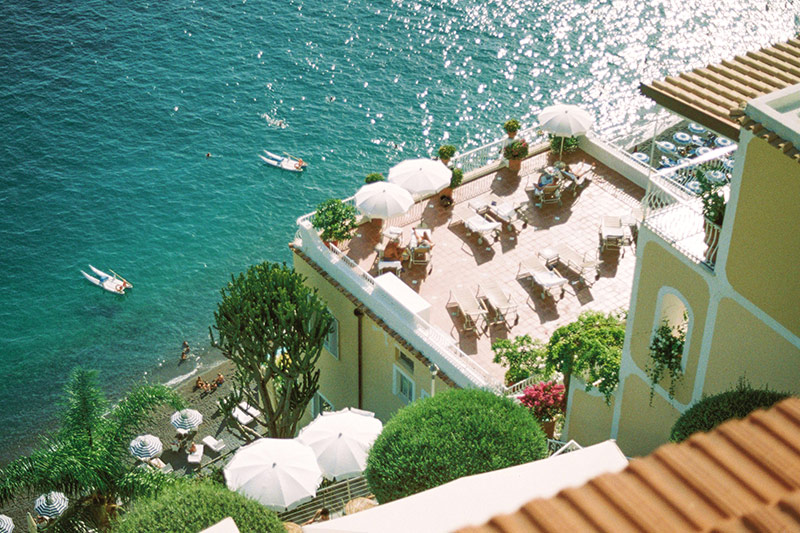
With the sun lingering in the sky well past 9 PM, you can pack each day with exploring and still have time for an evening at an outdoor market or a beachside bar. This season is filled to the brim with life, drawing everyone from solo backpackers to families and festival-hopping travelers.
Pros:
- Extended Daylight Hours: With nearly endless daylight, you can hike, swim, or roam from dawn to dusk without feeling rushed. In northern regions like Scandinavia, the sun barely sets, giving you surreal, midnight-hued landscapes perfect for adventurers.
- Festivals and Open-Air Events Everywhere: From Portugal’s seaside music festivals to Munich’s outdoor beer gardens, Europe’s social calendar is packed in summer. Major events like Edinburgh’s Fringe Festival, Spain’s La Tomatina, and France’s Bastille Day bring unique experiences that are worth planning around.
- Everything in Full Swing: Historic sites, coastal towns, mountain trails—all are geared up for summer. Ferries run to the Greek islands regularly, Swiss mountain trains operate at full capacity, and outdoor activities like canyoning, diving, and paragliding are fully available.
Cons:
- Tourist Season Hits Hard: Popular spots like the Amalfi Coast, Dubrovnik, and Paris overflow with tourists. If you’re after solitude, Europe’s summer hotspots won’t deliver that, so you might consider lesser-known places or rural hideaways.
- High Costs for Everything: Summer tourism means peak prices. Hostels, hotels, and flights will cost significantly more, especially in tourist-favored destinations.
- Heat in Southern Europe: Cities like Athens, Madrid, and Rome can get scorching, with temperatures often exceeding 35°C (95°F).
Best For:
- Beach Lovers and Water Sports Enthusiasts
- Festival and Party Fans and Social Travelers
- Families on Summer Break
Backpacking Europe in Autumn (September-November)

As the summer crowds fade and the air cools, Europe reveals itself in softer colors and a slower rhythm.
Pros:
- Comfortable Weather for Exploring: With the summer heat easing up, you can climb the Acropolis or roam through Florence without breaking a sweat.
- Lower Prices and Thinner Crowds: Airfares, accommodations, and even museum tickets are often cheaper in the fall. Destinations like Barcelona, Venice, and Amsterdam regain a more local feel as the tourist rush dies down.
- Stunning Fall Landscapes: In regions like Bavaria, the Swiss Alps, and the Scottish Highlands, autumn colors make for incredible scenery. If you’re into photography or just want that extra magic in your surroundings, Europe’s forests and parks are alive with rich reds, oranges, and yellows.
Cons:
- Some Sites Close for the Off-Season: While major cities stay fully open, rural spots and certain coastal towns may start closing attractions or scaling back hours.
- Less Daylight: As the days shorten, you might find you need to pack your itinerary into fewer daylight hours, especially if you’re exploring further north.
Best For:
- Culture Seekers and History Lovers
- Travelers Looking for Serenity and Savings
Backpacking Europe in Winter (December-February)

Winter is the season for a unique, atmospheric experience that contrasts beautifully with Europe’s busier months… unless you hate the cold.
Pros:
- Festive Magic and Unforgettable Experiences: European cities go all out for the holiday season. Christmas markets in Germany, ice skating on frozen canals in the Netherlands, and fireworks over the Eiffel Tower for New Year’s Eve create an immersive winter wonderland.
- World-Class Winter Sports: For those who crave adventure, Europe’s mountainous regions offer some of the best winter sports in the world. Think skiing and snowboarding in the French and Swiss Alps, ice climbing in Austria, or dog sledding in Lapland.
- Lower Prices and Fewer Tourists: With the exception of holiday weeks, winter tends to offer more budget-friendly options for flights and accommodation. Iconic destinations like Paris, London, and Prague are quieter, giving you a rare opportunity to experience them with a bit more space.
Cons:
- Limited Daylight in Northern Regions: Northern Europe, particularly in places like Scandinavia and the Baltics, sees very few daylight hours in winter.
- Chilly Temperatures and Snow: Temperatures can drop significantly, especially in places like Eastern Europe and Scandinavia. While the cold can add to the charm, make sure you’re well-prepared for icy streets and occasional snow delays.
Best For:
- Winter Sports Lovers
- Travelers Seeking Romance or Festive Charm
Additional Considerations:
- Visa and Entry Requirements for Europe: Most Schengen Area countries allow certain passport holders to enter visa-free for up to 90 days within any 180 days for tourism, business, or transit. Check if your country qualifies for this visa-free entry.
- Passport Validity: Make sure your passport is valid at least three months beyond your EU departure date, though six months is recommended.
- Supporting Documents: You may need proof of onward travel, funds, and accommodation details. These documents can help ensure a smooth entry.
- Health and Travel Insurance: Requirements vary by country; check if travel insurance is necessary for your destination.
- Transportation: Research transportation options, including trains, buses, and flights.
- Accommodation: Book accommodations in advance, especially during peak seasons!
- Packing: Pack light and versatile clothing, considering the weather conditions of your destinations.
Best Time to Travel to Northern Europe (Scandinavia, Baltic States, UK, …)

- Summer (June-August): This is the peak season, with long daylight hours and mild temperatures. It’s ideal for exploring cities, hiking, and experiencing the midnight sun in the far north.
- Autumn (September-November): A magical time with colorful fall foliage, fewer crowds, and comfortable temperatures.
- Winter (December-February): Experience winter wonderlands with snow-covered landscapes, Christmas markets, and opportunities for winter sports.
- Spring (March-May): A transitional period with unpredictable weather. However, it can be a great time for budget travelers and those who enjoy fewer crowds.
Best Time to Travel to Central Europe (Germany, Austria, Switzerland, Czech Republic, Poland, …)
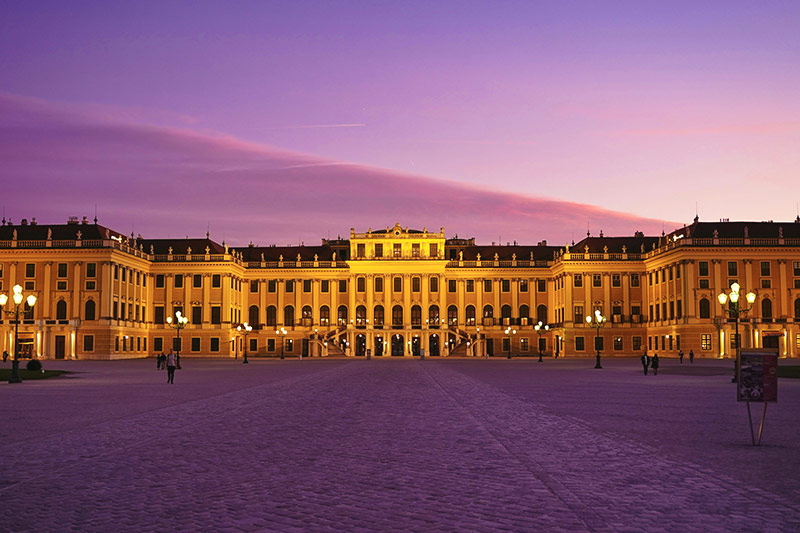
- Summer (June-August): A popular time for festivals, outdoor activities, and city exploration. However, expect crowds and higher prices.
- Autumn (September-November): A good season with pleasant weather, stunning fall foliage, and fewer crowds.
- Winter (December-February): A magical time with Christmas markets, winter sports, and cozy alpine villages.
- Spring (March-May): A transitional period with varying weather conditions. It’s a good time for budget travelers and those who enjoy fewer crowds.
Best Time to Travel to Southern Europe (Mediterranean Coast, Italy, Spain, Greece, Portugal, …)

- Summer (June-August): The peak season with hot, sunny weather, perfect for beach holidays, swimming, and outdoor activities.
- Autumn (September-November): A pleasant time with warm temperatures, fewer crowds, and lower prices. It's ideal for sightseeing, cultural experiences, and wine tours.
- Winter (December-February): A quieter period with mild temperatures in coastal areas. It's a good time for exploring historical sites, enjoying winter festivals, and indulging in local cuisine.
- Spring (March-May): A beautiful season with blooming flowers, pleasant temperatures, and fewer crowds. It's perfect for hiking, cycling, and exploring historic towns.
Is Europe Safe for Solo Backpacking?
Yes, Europe is generally safe and welcoming for solo backpackers. With low violent crime rates, efficient public transport, and well-developed tourism infrastructure, it’s easy to navigate and connect with others.
Key Tips:
- Watch for petty theft in crowded spots.
- Book reputable, central accommodations in advance.
- Use public transport wisely, avoiding late arrivals in unfamiliar places.
- Blend in by dressing appropriately and staying aware of local customs.
FAQs for Backpacking Through Europe
What should I pack?
- Bring versatile clothing for varied weather, a universal adapter, walking shoes, essential toiletries, a reusable water bottle, and a small first-aid kit.
What travel insurance do I need?
- Choose insurance covering medical emergencies, cancellations, lost luggage, and theft. Customize as needed based on your itinerary!
How much does it cost?
- Western Europe is pricier, but using public transport, staying in hostels, and cooking your own meals can keep costs down.
What vaccinations do I need?
- No special vaccines are typically required, but make sure routine vaccines (MMR, tetanus, flu) are up-to-date. Check specifics per country.
Classic Trail: London to Rome
- London (3-5 days): Start in London with iconic sights like Big Ben, Buckingham Palace, and the British Museum. For culture, explore Shoreditch, Camden Market, and try a Thames River cruise. Grab an Oyster Card for easy transport and enjoy budget stays at hostels. (Best hostels in London)
- Paris (3-5 days): From London, head to Paris. Stroll through Montmartre, climb the Eiffel Tower, and wander along the Seine. Visit the Louvre and Notre-Dame, and get a Navigo Easy metro card for affordable transport. (Best hostels in Paris)
- Amsterdam (2-3 days): Next, visit Amsterdam. Discover the Van Gogh Museum, Rijksmuseum, and Anne Frank House. Bike around the city or cruise the canals. Check out the city’s nightlife, and grab an I Amsterdam City Card for free entries. (Best hostels in Amsterdam)
- Munich (3-4 days): In Munich, enjoy Bavarian cuisine and visit beer halls like Hofbräuhaus. Explore Marienplatz, Nymphenburg Palace, and, if possible, Neuschwanstein Castle. Visit in late September for Oktoberfest if you can! (Best hostels in Munich)
- Rome (4-5 days): Wrap up in Rome with visits to the Colosseum, Vatican City, and the Roman Forum. Wander through Trastevere and try Italian classics like pasta and gelato. Look for budget hostels or private rooms for more privacy. (Best hostels in Rome)
Sunny Mediterranean Trail: Spain, Italy, and Greece
- Spain (7-10 days): Start in Barcelona to explore Gaudí’s architecture, the Gothic Quarter, and the beaches. Head to Madrid to enjoy Retiro Park, the Prado Museum, and awesome nightlife. For coastal views, visit Seville’s flamenco scene or Granada’s Alhambra.
- Italy (7-10 days): Begin in Rome, with sites like the Colosseum and Pantheon. Move to Florence for art at the Uffizi, Michelangelo’s David, and Tuscan cuisine. Head to the Amalfi Coast for a taste of Italian coastal life and finish in Venice with a gondola ride.
- Greece (7-10 days): Start in Athens to explore the Acropolis and Plaka neighborhood. Ferry to Santorini for sunsets, Fira and Oia villages, and volcanic beaches. Wrap up in Mykonos with its nightlife, windmills, and beach clubs.
Eastern European Adventure
- Prague, Czech Republic (3-4 days): Begin with Prague’s Charles Bridge, Old Town Square, and Prague Castle. Sample traditional Czech foods and enjoy the local pilsners. (Best hostels in Prague)
- Budapest, Hungary (3 days): Head to Budapest to see Buda Castle, Fisherman’s Bastion, and thermal baths like Széchenyi. Explore the nightlife at ruin bars and enjoy a Danube River cruise. (Best hostels in Budapest)
- Krakow, Poland (3-4 days): Visit Krakow’s Old Town, Wawel Castle, and Kazimierz. Take a day trip to Auschwitz and the Wieliczka Salt Mine for insight into history. (Best hostels in Krakow)
- Sofia, Bulgaria (5 days): In Sofia, see the Alexander Nevsky Cathedral and Vitosha Boulevard. Day trip options include Plovdiv’s ancient theater or Rila Monastery. (Best hostels in Sofia)
Central European Loop: Germany, Austria, Czech Republic, and Poland
- Berlin, Germany (3-4 days): Start in Berlin with the Berlin Wall, Brandenburg Gate, and Museum Island. Explore Kreuzberg’s cafés and street art. (Best hostels in Berlin)
- Prague, Czech Republic (3-4 days): Move to Prague, and explore Charles Bridge, Old Town Square, and the Astronomical Clock. Discover the unique Jewish Quarter and try a beer-tasting tour. (Best hostels in Prague)
- Vienna, Austria (3-4 days): Head to Vienna for Schönbrunn Palace, the Opera House, and the Museum Quarter. Relax at a traditional coffeehouse and sample the famous sachertorte. (Best hostels in Vienna)
- Krakow, Poland (3-4 days): Finish in Krakow with Wawel Castle and a visit to Auschwitz. Stroll through the Jewish Quarter, and don’t miss trying pierogi at a local eatery. (Best hostels in Krakow)
Scandinavian Adventure: Denmark, Sweden, and Norway
- Copenhagen, Denmark (3-4 days): Start in Copenhagen, seeing Tivoli Gardens, Nyhavn harbor, and the Little Mermaid statue. Rent a bike to explore and enjoy the café scene. (Best hostels in Copenhagen)
- Stockholm, Sweden (3-4 days): Take a train to Stockholm, visiting the Vasa Museum, Gamla Stan, and the ABBA Museum. Take a boat tour of the archipelago and explore Swedish fika culture. (Best hostels in Stockholm)
- Oslo, Norway (3-4 days): Continue to Oslo to see the Viking Ship Museum, the Vigeland Sculpture Park, and the Oslo Opera House. Day trip options include hiking in the surrounding forests or exploring the fjords. (Best hostels in Oslo)
- Bergen, Norway (3-4 days): End in Bergen with its historic Bryggen Wharf and fish market. Take the Fløibanen funicular for city views or embark on a fjord cruise. (Best hostels in Bergen)
Tips for Planning Your Backpacking Trip
- Create a Flexible Itinerary: While it’s good to have a plan, leave room for spontaneity. Some of the best travel experiences happen when you stray off your schedule.
- Use Budget-Friendly Transport: Look for regional train passes, budget airlines, and bus options like FlixBus or BlaBlaCar for cost-effective travel.
- Book Accommodation in Advance: Especially during peak seasons, book your hostels or budget hotels early to secure the best prices and locations.
- Stay in Hostels: Hostels are great for meeting other backpackers, sharing tips, and keeping costs low. Use platforms like Hostelz.com to compare prices and find hidden gems.
- Travel Insurance is a Must: Protect yourself from unexpected medical emergencies, cancellations, or theft by investing in comprehensive travel insurance.
- Pack Light: A versatile wardrobe and lightweight essentials will make hopping from city to city much easier.
Hostelz.com is the world’s most comprehensive hostel-focused travel platform. We bring together listings from all the major booking sites to help you easily compare prices, see real guest reviews, and find the best deals—no matter where you’re headed. Check out our How It Works page.
Not sure which hostel to pick? Use our Hostel Comparizon Tool to compare your favorite hostels side-by-side before you book.
Let us help you travel smarter and sleep cheaper.
Travel Cheaper, Travel Longer
